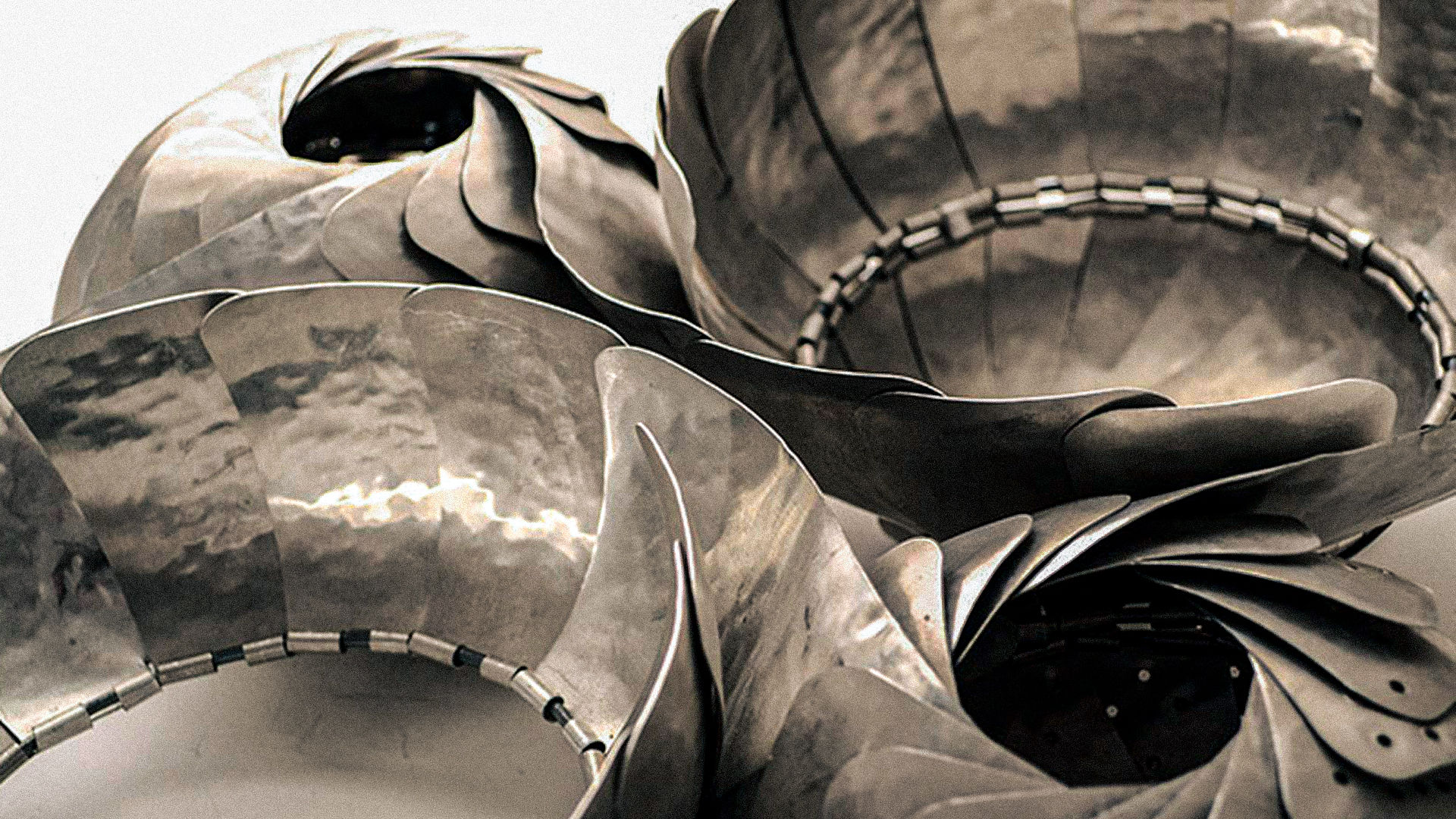Fields
Immersive Installation, 2009 — Chashama Gallery, 112 W 44th Street, New York, NY

Immersive Installation, 2009 — Chashama Gallery, 112 W 44th Street, New York, NY
Fields is a transforming aperture field built around a patented overlapping-leaf mechanism, scaled up into a dynamic installation of light and form. Each component was fabricated using a combination of digital precision and handcraft—laser-cut aluminum sheets were hammered over molds, rolled, and meticulously assembled into kinetic fixtures.
Developed by Yael Erel and Avner BenNatan in collaboration with Laura Haak, the piece incorporates a series of modular works including the Sagittarius Constellation Wall, the Janus Couple, the Iris Constellation, and the pendant Iris Involution. These individual elements feature polished materials—nickel-plated brass, stainless steel, aluminum—and Xenon bulbs, forming a constellation of sculptural lights that blend industrial clarity with responsive behavior.
Originally presented as part of an immersive light and dance installation, Iris Fields was exhibited in Crossing Disciplines – Light, Drawing Lightscapes, and Ann & Alex Make Dances: Greatest Hits / Iris Fields. Assisted by Pratt Institute research studnet Laura Haak and Natasha Harper.
Dimensions: 23′ W × 8′ H × 8″ D
Installation by Yael Erel and Avner Ben Natan
Full Project Team: Yael Erel, Avner Ben Natan, Laura Haak, Natasha Harper and Sharan Elran
Photography: Yael Erel and Avner Ben Natan

Photography and videography by Yael Erel and Avner BenNatan.
featured in
Drawing Lightscapes explores the tension between the physical and the projected through using light as a medium to draw lightscapes onto screens and lighting objects as an instrument to project, filter, and reflect light. The installation uses light as a projectional drawing device at the scale of architecture. It is composed of screens and custom light fixtures that are designed to work together to create several different immersive environments.
Light is drawn onto an installation of screens that register temporal lightscapes. Viewers peek behind the screens into constructed environments and enter the depth of the drawings. As one enters, his shadow modifies the drawing.
The screens allow for two major modes of viewing: the unobstructed view of the lightscapes as drawings, which imply an imaginary scape, as well as narrow passage zones, which encourage the viewer to peek behind the screen and enter the field of projection. As one journeys behind the screen, they enter the drawing, modifying the drawing itself. The existence of multiple modes of viewing creates a perceptual scale shift in the experience of the viewer, moving from abstraction to humor.
Light is a transient, ineffable material in its nature; drawing with light maintains this fleeting quality through temporary registration of moments, rather than maintaining a fixed recording of them. As the projection stops, the screen returns to its original blank state, with no trace of the drawings that passed over its surface.



















